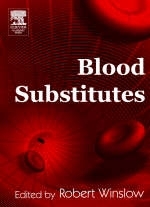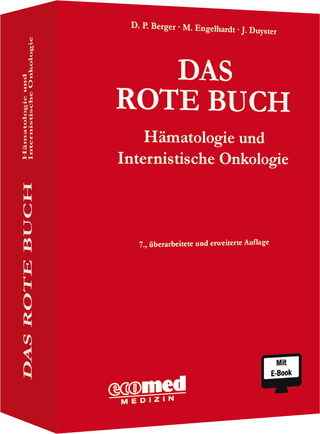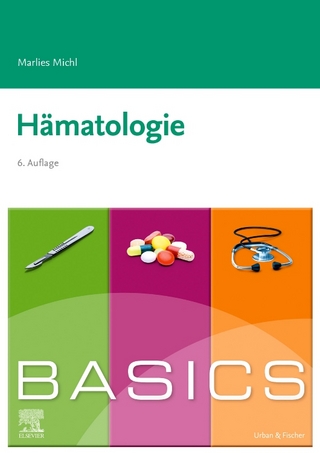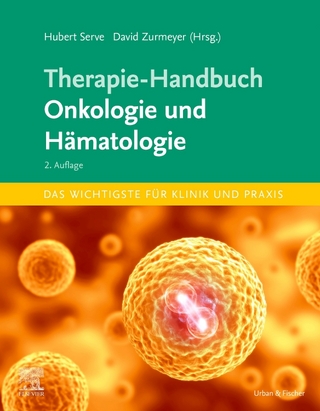
Blood Substitutes
Academic Press Inc (Verlag)
978-0-12-759760-7 (ISBN)
Blood substitutes are solutions designed for use in patients who need blood transfusions, but for whom whole blood is not available, or is not safe. This interest has intensified in the wake of the AIDS and hepatitis C epidemics. Blood Substitutes describes the rationale, current approaches, clinical efficacy, and design issues for all blood substitutes now in clinical trials. The many summary diagrams and tables help make the book accessible to readers such as surgeons and blood bankers, who have less technical expertise than the biochemists and hematologists who are designing and testing blood substitutes.
Professor Winslow received his M.D. degree and postgraduate training in internal medicine and hematology at the Johns Hopkins University and Hospital. He studied hemoglobin biochemistry at the Massachusetts Institute of Technology and Molecular Biology at the National Institutes of Health. His research, for more than 30 years, has been aimed at the intersection of the synthesis, structure and function of hemoglobin, in such areas as sickle cell anemia, high altitude physiology and hemoglobin-based oxygen carriers. Professor Winslow previously headed the Blood Research Division at the Letterman Army Institute of Research, responsible for the US Army's blood substitute program. Between 1991 and 1998, he was a Professor of Medicine, leading a blood substitute program at the University of California at San Diego (UCSD), supported by the National Institutes of Health. Professor Winslow has also served as a consultant to many private companies and has been an advisor for, among others, the Federal Aviation Administration (FAA), Food and Drug Administration (FDA), the Institute of Medicine of the National Academy of Science, the Pan American Health Organization, the National Institutes of Health, the Department of Defense and a number of foreign governments. He has written more than 200 scientific articles on clinical, physiological and biochemical aspects of hemoglobin and oxygen transport.
Section 1: Background
Introduction
Chapter 1: Historical Background
Chapter 2: Transfusion Medicine
Chapter 3: Regulatory Perspectives on Clinical Trials for Oxygen Therapeutics in Trauma and Transfusion Practice
Section 2: Physiological Basis
Introduction
Chapter 4: Clinical Physiology: Oxygen Transport and the Transfusion Trigger
Chapter 5: The Role of Oxygen and Hemoglobin Diffusion in Oxygen Transport by Cell-free Hemoglobins
Chapter 6: Oxygen Transport Properties of Hemoglobin-Based Oxygen Carriers: Studies using Artificial Capillaries and Mathematical Simulation
Chapter 7: Mechanisms of Oxygen Transport in the Microcirculation: Effects of Cell-Free Oxygen Carriers
Chapter 8: Shear Stress Mechanotransduction and the Flow Properties of Blood
Chapter 9: Local Regulation of Blood Flow
Section 3: Clinical Applications
Introduction
Chapter 10: Clinical Indications for Blood Substitutes and Optimal Properties
Chapter 11: Crystalloid Solutions
Chapter 12: Hemoglobin-Based Oxygen Carriers as Resuscitative Solutions for Trauma and Combat Casualty Care
Chapter 13: Surgical Hemorrhage
Chapter 14: Clinical Trials in Cardiac Surgery
Chapter 15: Hemodilution
Chapter 16: Clinical Hemodilution
Chapter 17: Potential for Blood Substitutes in Tissue Ischemia
Section 4: Toxicity and Side Effects
Introduction
Chapter 18: Redox and Radical Reactions of Hemoglobin Solutions: Toxicities and Protective Strategies
Chapter 19: Pro-Oxidant Activity of Hemoglobin and Endothelial Cytotoxicity
Chapter 20: Renal Toxicity
Chapter 21: Hemoglobin and Neurotoxicity
Chapter 22: The Role of Inflammation in the Toxicity of Hemoglobin-Based Oxygen Carriers
Chapter 23: Hemoglobin-Induced Myocardial Lesions
Section 5: Perfluorocarbon-Based Oxygen Carriers
Introduction
Chapter 24: Fluorocarbon Emulsions as in vivo Oxygen Delivery Systems: Background and Chemistry
Chapter 25: Fluosol®: The First Commercial Injectable Perfluorocarbon Oxygen Carrier
Chapter 26: Perftoran®
Chapter 27: Rational Development of Oxyfluor™
Chapter 28: Oxygent™, a Perfluorochemical-Based Oxygen Therapeutic for Surgical Patients
Section 6: Hemoglobin-Based Oxygen Carriers
Introduction
Chapter 29: The Structural and Functional Properties of Hemoglobin and their Relevance for a Hemoglobin-Based Blood Substitute
Chapter 30: Hemoglobin Modification
Chapter 31: Designing Recombinant Hemoglobin for Use as a Blood Substitute
Chapter 32: Design, Conformational, Functional and Physiological Characterization of Recombinant Polymeric Heme-Proteins
Chapter 33: aa-Crosslinked Hemoglobin
Chapter 34: DCLHb and rHb1.1
Chapter 35: Clinical Studies with DCLHb
Chapter 36: Hemopure® (HBOC-201, Hemoglobin Glutamer-250 (Bovine)): Preclinical Studies
Chapter 37: HBOC-201 (Hemoglobin Glutamer-250 (Bovine), Hemopure®): Clinical Studies
Chapter 38: Polyhemoglobin–Enzymes as New-Generation Blood Substitutes and Oxygen Therapeutics
Chapter 39: Surface Decoration of Hemoglobin with Polyethylene Glycol
Chapter 40: Hemospan® (MP4), A Human Hemoglobin Modified with Maleimide-Polyethylene Glycol
Chapter 41: Dextran–Hemoglobin
Chapter 42: Development of Non-Extravasating Hemoglobin-Based Oxygen Carriers
Section 7: Liposomes and Related Products
Introduction
Chapter 43: Liposome-Encapsulated Hemoglobin: History, Preparation and Evaluation
Chapter 44: Hemoglobin Vesicles as a Molecular Assembly: Characteristics of Preparation Process and Performances as Artificial Oxygen Carriers
Chapter 45: Nanodimension Biodegradable Polymeric Membrane Artificial Red Blood Cells
Chapter 46: Albumin-Heme: A Synthetic Heme-Based Oxygen Carrier
| Erscheint lt. Verlag | 5.10.2005 |
|---|---|
| Verlagsort | San Diego |
| Sprache | englisch |
| Maße | 210 x 279 mm |
| Gewicht | 1940 g |
| Themenwelt | Medizinische Fachgebiete ► Innere Medizin ► Hämatologie |
| ISBN-10 | 0-12-759760-3 / 0127597603 |
| ISBN-13 | 978-0-12-759760-7 / 9780127597607 |
| Zustand | Neuware |
| Haben Sie eine Frage zum Produkt? |
aus dem Bereich


